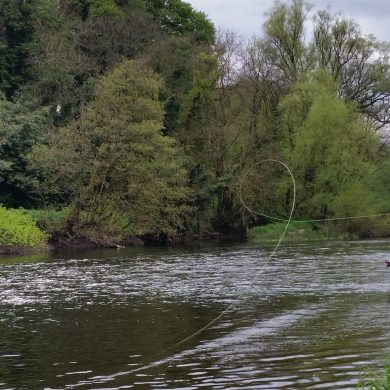The North Atlantic Salmon Fund (NASF) report:
Great runs of extremely healthy-looking salmon are pouring into most Icelandic rivers and the fish are a good deal bigger than usual. It seems they have found plenty of food in the seas around Iceland and the numbers more than compensate for a relatively poor salmon year in 2012.
The runs of grilse have also come early and this usually means that lots of salmon will be coming into the rivers. Since the fishing season opened on 05 June the Nordurá has so far been the top river with catches already over 2000.
Though the season has scarcely begun the growing prospect of a salmon bonanza has already aroused extra enthusiasm amongst Icelandic anglers and tackle shops are reporting phenomenal sales of rods, reels and waders and enthusiastic anglers are planning more trips later in the season.
The rivers Haffjardaraá, Langá and Thvera/Kjarra all had record openings and the rivers Midfjardaraá, Blanda and Rangá(s) are also fishing extremely well.
Overall the catch is 40% better than average although, conversely, fishing is still very slow in the north east of Iceland where massive winter snowfall has kept the rivers cool with snow melt and has delayed the runs a little. Snow melt, low river temperatures and few salmon have been caught in the opening slot, unlike in recent years. Late runs are traditional in the north east so success this season is still an open question.
See the chart prepared by Sigurbjörn Gunnlaugsson at www.laxar.net which monitors salmon catches in Iceland throughout the season.
Although 2012 turned out to be a great disappointment, salmon catches in Iceland have improved remarkably over the last decade with new records being set year after year. After last year’s poor run, catches so far this year have come as a pleasant surprise and we are already hoping that a new record rod catch may be reached for many regions.
Huge shoals of mackerel pursued by an international fleet of purse-seiners annually transverse northern seas, migrating from Norwegian waters westwards before turning south and travelling to EU waters. In recent years their path has taken them further north and into the fertile feeding grounds off Iceland. This influx and the pressure the mackerel must exert on stocks of feed fish were considered to be major factors in last year’s poor performance by the salmon. It now looks as if this theory was wrong as even more mackerel have been appearing and they have now begun to use Icelandic water for spawning. But this invasion certainly does not appear to have handicapped the salmon stocks this year.
“Long term conservation measures are really paying dividends” said Orri Vigfusson, Chairman of the North Atlantic Salmon Fund (NASF). “Our mission is to return the stocks of all the Atlantic salmon countries to their formerabundance. Our policies are clear and straight forward. We are determined to end mixed-stock commercial fisheries to ensure that more fish return to their native rivers and at the same time encourage the development of better quality habitat.
“We believe that regions with vulnerable salmon rivers should be free of fish farms. Much also depends on the use of common sense and practical river regulations that are not negated by excessive bureaucracy. We think that sensible limits should be imposed on the number of rods a river should be expected to carry, and for many rivers, catch-and-release should also be a major consideration.”

